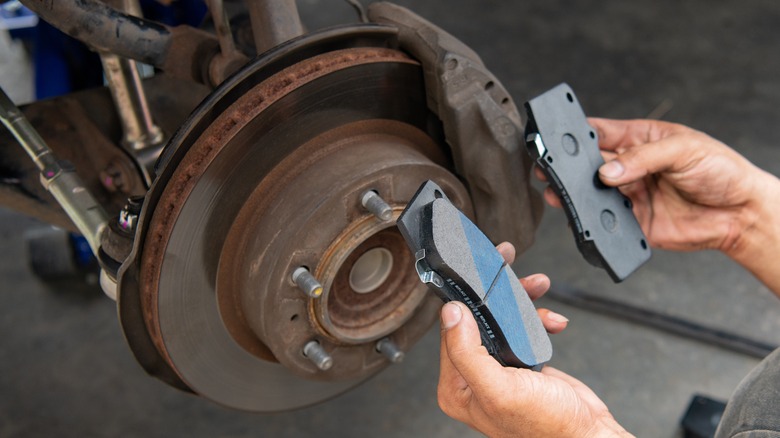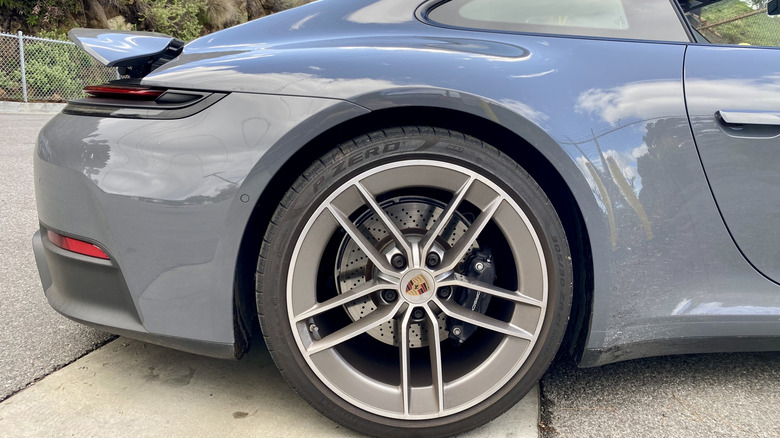
If you're a car enthusiast who loves driving fast then you're likely familiar with the phenomenon of brake fade, but it's something that can happen to regular drivers, too. Have you ever gone for a spirited canyon drive, taken your car to a recreational track day, or even found yourself going down a long steep hill and felt your brake pedal become squishy or less effective at actually slowing you down? That's brake fade, and it can be an unnerving phenomenon at best and a dangerous one at worst.
Knowing the causes of brake fade can help you mitigate its occurrence, whether you're considering stepping up your car's braking power and longevity for an upcoming track event, or if you live somewhere with lots of hills and elevation changes. Most modern cars are equipped with disc brakes, so this article will cover the phenomenon of brake fade as it applies to disc brakes.
Read more: These Are The Best Tires For Your Car, Truck Or SUV, According To Consumer Reports
How Car Brakes (Are Supposed To) Work

With disc brakes, a metal disc attached to the axle rotates; when you press the brake pedal, calipers squeeze the rotating disc to slow it down, thus slowing your vehicle speed. Brake pads are what live inside the caliper, and they actually make direct contact with the rotating brake disc depending on how hard you press the brake pedal.
Brake pads are often made of ceramic or metallic components, which are specially formulated to dissipate the heat that's created by the friction between the brake pads and the brake disc when you step on the brake pedal. The chemical composition of brake pads varies, but all brake pads produce gases when they're superheated, which is actually the cause of brake fade.
When temperatures rise drastically during intense or long periods of sustained braking, the friction material that makes up your brake pads begins to off-gas, and that off-gassing creates a thin layer of gas between the pad and the rotor, thus preventing your brakes from doing their job. If you've ever seen brakes smoking, or have smelled a bad odor after periods of intense driving, that's the brake pads off-gassing, and that's the gas that forms between the brake pad and the rotor causing your brakes to perform worse.
Slotted And Drilled Rotors Help Mitigate Brake Fade

The brake discs on most cars are flat, but performance cars often have brake discs that have holes or divots drilled into them or slots carved out. These indentations help the gases created by hot brake pads to escape, as well as any debris like residual brake dust so they don't end up forming the layer between the pad and disc that causes brake fade.
If you are concerned about brake fade affecting your car, swapping your pads and rotors is actually a relatively simple task, even for inexperienced mechanics. You can always take your car to a shop and have them take care of the swap, but changing your brake pads or rotors is a great way to start your journey of working on your own car.
There are aftermarket brake kits that will fit virtually any car on the market, and many of these kits will offer rotors that are drilled or slotted or both to help keep your brakes working great regardless of how much abuse you put them through. Upgrading to drilled or slotted brake discs might be a smart choice if you live somewhere or often travel on steep roads that require long periods of sustained braking, since that's a significant cause of brake fade.
Want more like this? Join the Jalopnik newsletter to get the latest auto news sent straight to your inbox...
Read the original article on Jalopnik.









